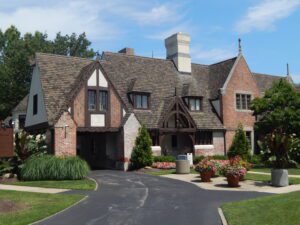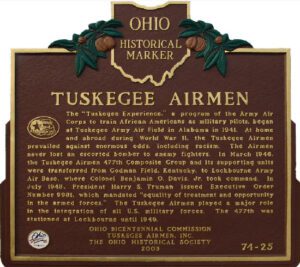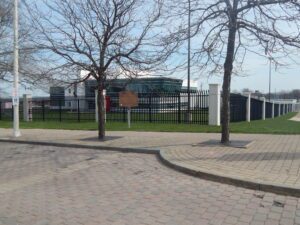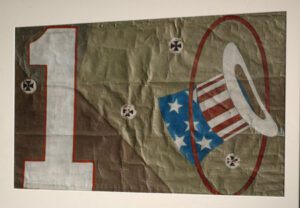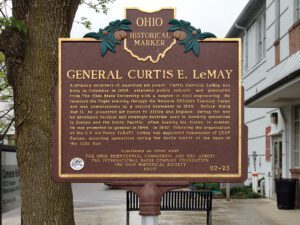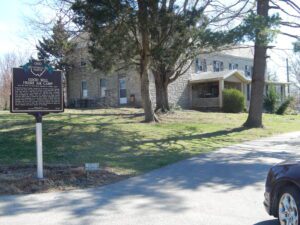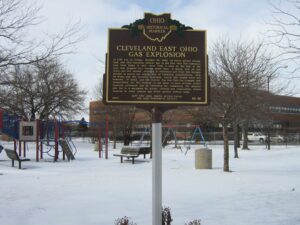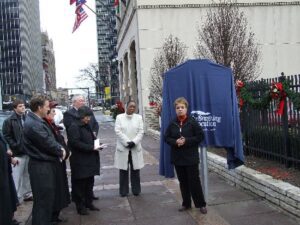, OH
William E. Telling (1869-1938) was one of ten children born in a farmhouse on this property. As a boy he sold strawberries and milk door-to-door and worked in a local sandstone quarry until at age 23 he purchased a milk route. He and four brothers formed the Telling Brothers Ice Cream Company in 1895 with William as president. A merger in 1915 formed the Telling Belle Vernon Dairy Company that was the first local distributor of pasteurized, glass-bottled milk. Their unique bacteriological laboratory (later Sealtest Laboratories) developed the baby food S.M.A. His recipe for success was “just work and work and work some more; do the work of two and draw the pay of one.”
, OH
The “Tuskegee Experiment,” a program of the Army Air Corps to train African Americans as military pilots, began at Tuskegee Army Air Field in Alabama in 1941. At home and abroad during World War II, the Tuskegee Airmen prevailed against enormous odds, including racism. The Airmen never lost an escorted bomber to enemy fighters. In March 1946, the Tuskegee Airmen 477th Composite Group and its supporting units were transferred from Godman Field, Kentucky, to Lockbourne Army Air Base, where Colonel Benjamin O. Davis, Jr. took command. In July 1948, President Harry S. Truman issued Executive Order Number 9981, which mandated “equality of treatment and opportunity in the armed forces.” The Tuskegee Airmen played a major role in the integration of all U.S. military forces. The 477th was stationed at Lockbourne until 1949.
, OH
Isaac Campbell Kidd, Sr. was born in Cleveland in 1884. He entered the United States Naval Academy in 1902 and dedicated his life to the Navy. While an ensign, he sailed around the world with the “Great White Fleet” from 1907 to 1909. During the 1920s and 1930s, he held numerous flag commands. Promoted to Rear Admiral in 1940, he was assigned as Commander, Battleship Division ONE. On December 7, 1941, Kidd was aboard the battleship USS Arizona in Pearl Harbor, Hawaii. During the surprise Japanese air raid, bombs detonated her ammunition. The resulting explosion sank the ship, causing the loss of 1,100 crewmen, including Admiral Kidd. He was posthumously awarded the Medal of Honor for his bravery. Two destroyers were named in honor of this World War II naval hero: USS Kidd (DD-661), 1943-1964 (still afloat as the centerpiece of the Louisiana Naval War Memorial, Baton Rouge), and USS Kidd (DDG-993), 1981-1998.
, OH
America’s World War I “Ace of Aces,” Edward Vernon Rickenbacker was born in Columbus in 1890 to Swiss immigrant parents, leaving school at age 12 to help support his family. Working for several Columbus automobile companies initiated his love of racing, and he achieved fame as a race driver and team owner between 1910 and 1916. Enlisting in the U.S. Army in 1917, he went to France as staff driver for General John Pershing with ambitions of becoming a combat flier. He managed a transfer to the American Expeditionary Force’s Aviation Instruction Center, learned to fly, and was assigned to the 94th Aero Squadron, the famed “Hat in the Ring” squadron led by ace Raoul Lufbery. (continued on other side)
, OH
A primary architect of American air power, Curtis Emerson LeMay was born in Columbus in 1906, attended public schools, and graduated from The Ohio State University with a degree in civil engineering. He received his flight training through the Reserve Officers Training Corps and was commissioned as a second lieutenant in 1929. Before World War II, he pioneered air routes to Africa and England; during the war he developed tactical and strategic doctrine used in bombing operations in Europe and the South Pacific, often leading his forces in combat. He was promoted to general in 1944. In 1947, following the organization of the U.S.Air Force (USAF), LeMay was appointed commander of USAF Europe, directing operations during the Berlin Airlift at the dawn of the Cold War. (continued on other side)
, OH
Reverend Richard E. Scully, founder of the Cincinnati Goodwill operated a Fresh Air Camp for women and children in the 1930s and 40s. The camp was part of a 100-acre site with vegetable fields, a swimming pool, tennis courts and horseshoe pits. The farm house on site was used as lodging for visitors. Men who worked at the camp received food and other forms of relief for their families. Vegetables produced on site were distributed at the Goodwill location at Ninth Street and Freeman Avenue in Cicinnati. According to family stories, Ruth Ann Eldridge, the frist child of Edison and Anna Eldridge, was buried on the site of the camp in 1933. Rev. Scully had officiated at Edison and Anna’s wedding and was a friend of the family.
, OH
At 2:30 p.m. on Friday, October 20, 1944, an above ground storage tank that held liquefied natural gas in the East Ohio Gas Company’s tank farm began to emit vapor from a seam on the side of the tank that dropped into nearby sewer lines. It mixed with air and sewer gas and ignited, resulting in explosions and fires that brought damage to nearly one square mile of Cleveland neighborhoods. With 79 homes and two factories destroyed, nearly 700 people were left homeless, 131 killed, and 225 injured. The East Ohio Gas Company took responsibility for this tragedy to aid those in need through direct financial assistance and by rebuilding the community. The disaster also led to a movement by public utilities and communities across America to store natural gas below ground without tanks.
, OH
The Breathing Association was founded in 1906 as the Tuberculosis Society under the leadership of public health advocate Carrie Nelson Black. The society provided nutrition, medical care, and sanitorium services to people who could not afford proper medical care. A tuberculosis dispensary was operated at 40 South Third Street in Columbus for Ohioans needing consultation and treatment. Tuberculosis, known as the White Plague, killed one out of nine persons in Columbus during the early 1900s. An Open Air School was established on Neil Avenue in 1913 for children in homes where there were one or more cases of tuberculosis. In 1931, the Nightingale Cottage was opened on Brice Road as a tuberculosis preventorium for children. As tuberculosis became controllable, the agency became focused on emerging lung health issues. Today, The Breathing Association continues as a leading resource on lung health issues and preventing lung disease.


